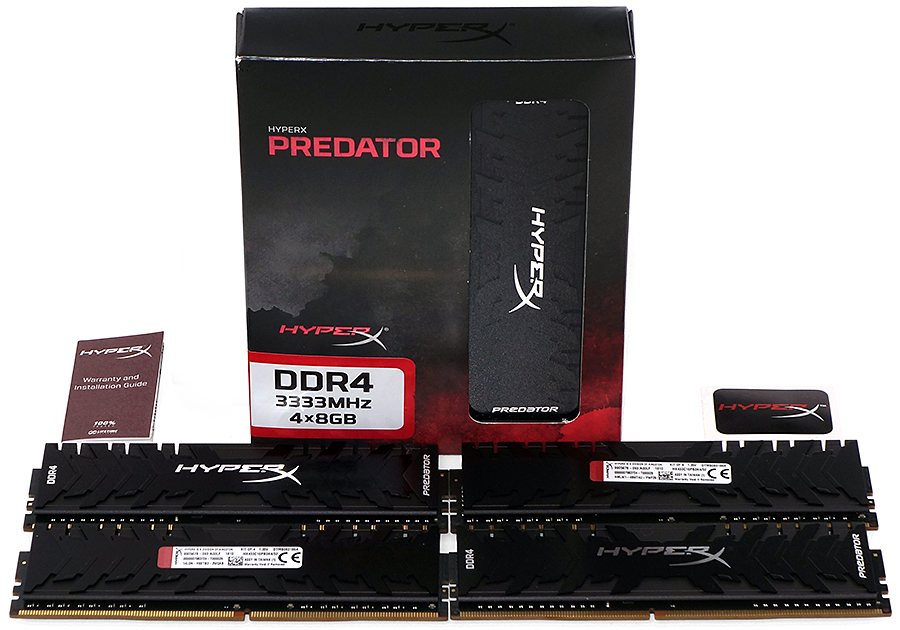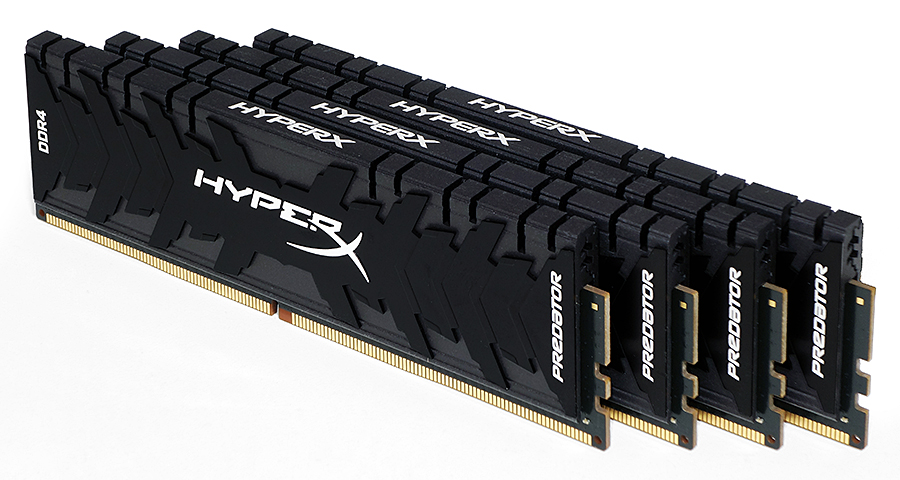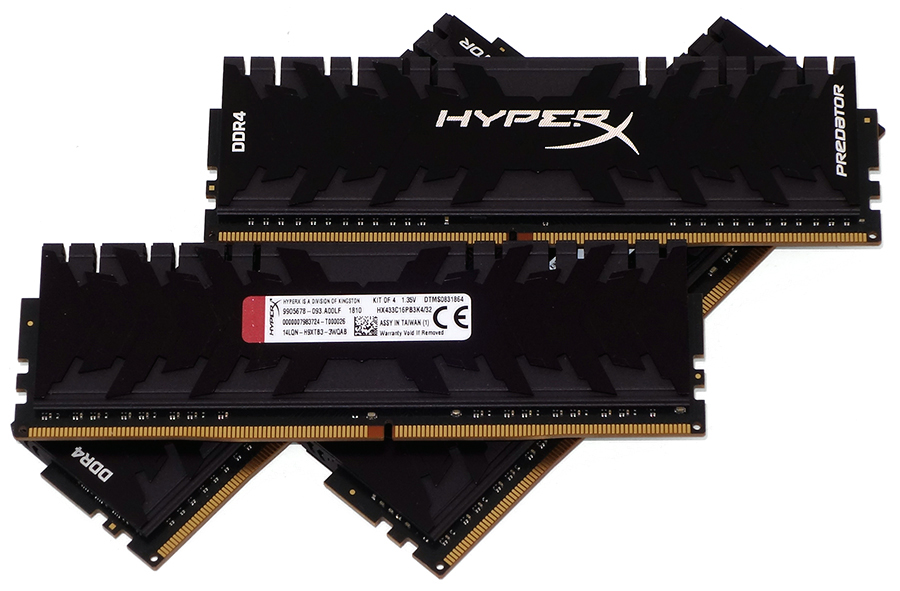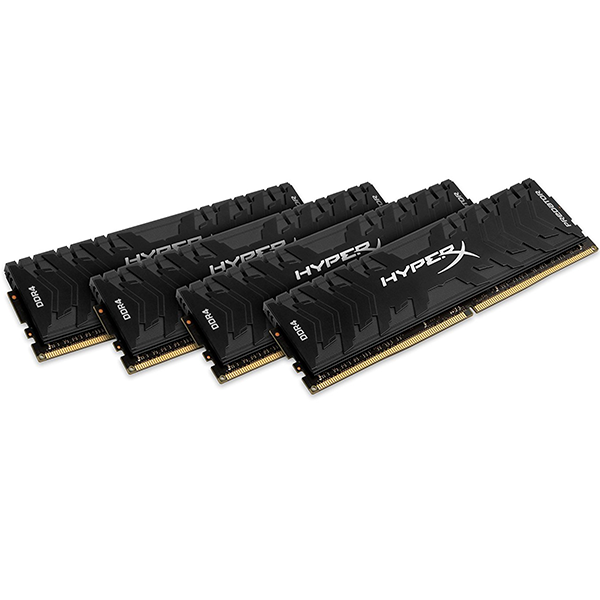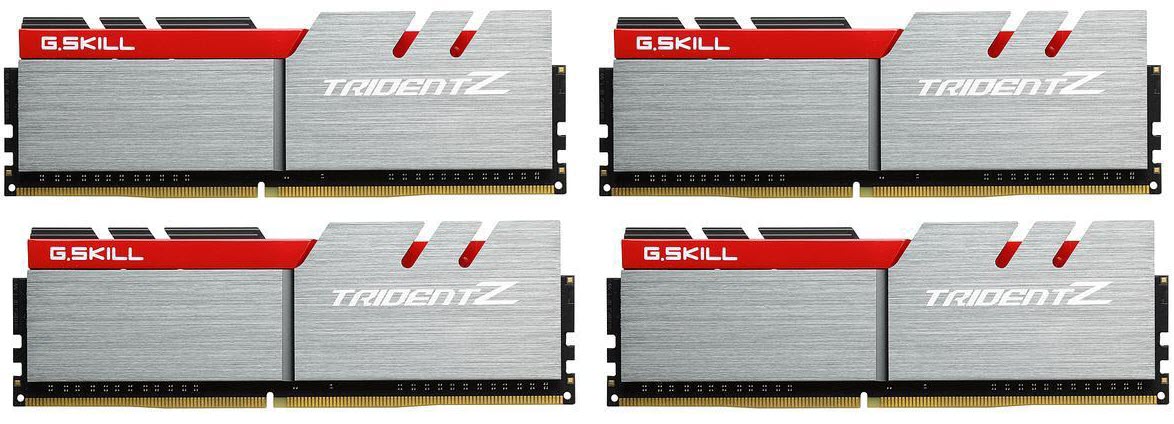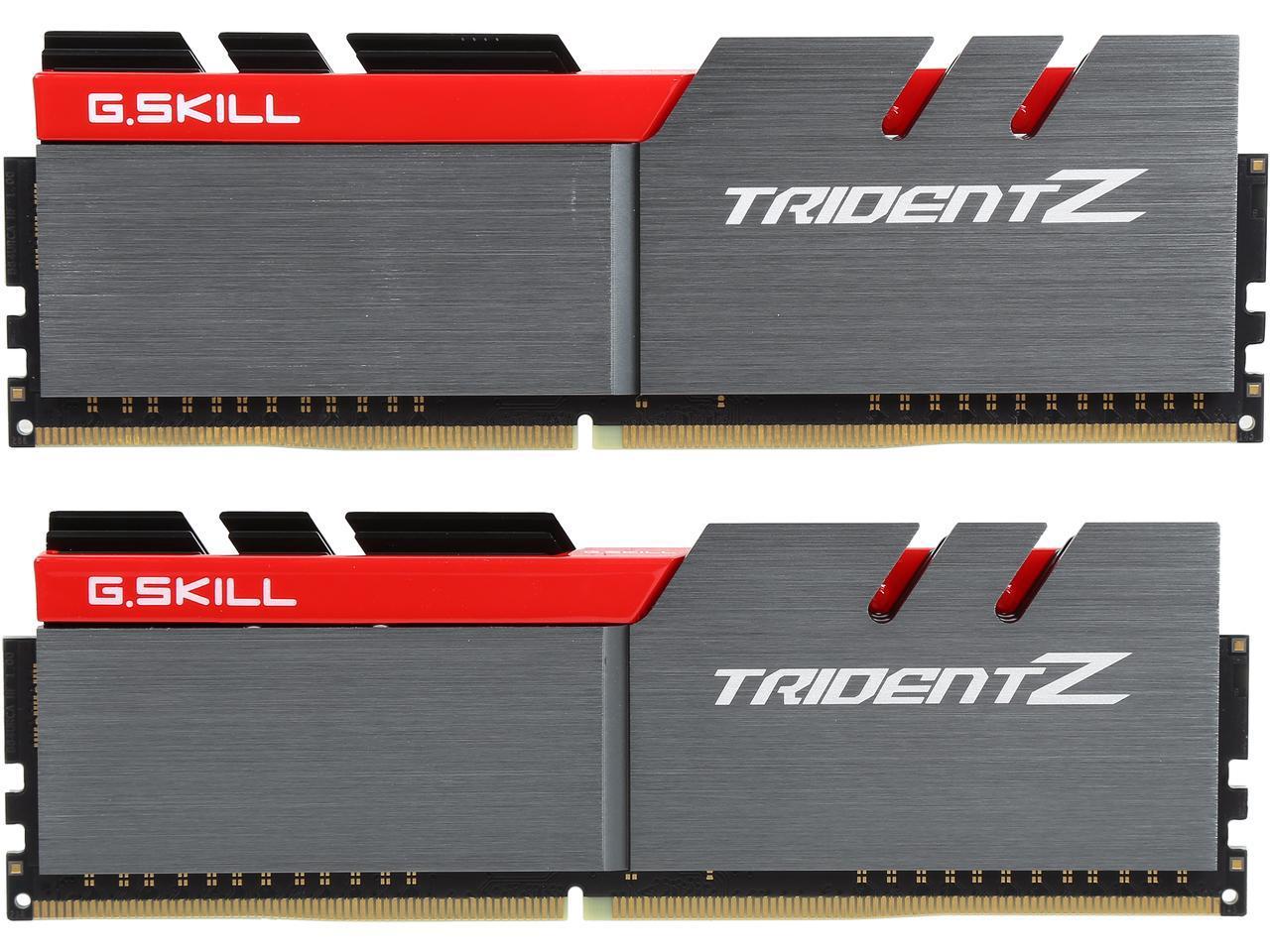Tom's Hardware Verdict
The HyperX Predator 4x 8GB DDR4-3333 is a highly-capable kit that should attract buyers who are trying to avoid the RGB trend. But if you're after a bargain, there are better options on that front.
Pros
- +
Great overclocking & latency tuning capacity
- +
Great performance at both baseline and custom-tuned settings
- +
Lifetime warranty
Cons
- -
Overpriced when compared to alternative solutions
Why you can trust Tom's Hardware
Specifications & Features
A few trends have emerged as DDR4 data rates have pushed through the theoretical ceiling of current manufacturing technology: First, we saw motherboard manufacturers push extra voltage into the memory signal, usually without showing it in their monitoring apps, to convince us that their boards were superior at memory overclocking. And then we saw memory vendors use those higher-than-shown voltage levels to advertise stuff like 1.35V DDR4-4000 that required a “specially approved” board--which just happened to be one of several that pushed 1.37V or more at the 1.35V setting. You’d think a quality-focused brand would avoid such shenanigans. Well, we're here to tell you that one has!
But sticking to honest advertising and high-quality components (with a limited lifetime warranty to back that up) doesn't come cheap. While this Kingston kit offers up a lot to like, it's not the best value, which may be a greater issue in these days of high-priced memory.
Well established these days as a brand that represents everything from headsets to thumb drives, HyperX Gaming remains a Kingston entity. And while separating HyperX from Kingston was meant to build excitement for the brand, we haven’t forgotten that, when it comes to memory, Kingston represents quality. In keeping with those expectations, we’re assured that these DDR4-3333 modules will run at their rated data rate without voltage cheats.
Users who appreciate hardware that doesn't rely on LED lighting to look flashy will note that each 8GB single-sided DIMM in this kit is layered in a dark-grey extruded-aluminum heat spreader, black-anodized decorative cover, and a reflective aluminum logo. Users who don’t care about fluff or flash at all will probably just ask how much it adds to the price of this kit. But we’ll consider the value of the entire product, including its performance capabilities, instead.
First, we have to point out that those of you who don’t have an XMP-enabled motherboard will only get DDR4-2400 speeds out of this kit, from which several timing profiles are available to match a wider variety of motherboards. Enabling XMP gets users DDR4-3333 at 16-18-18-36 latencies, with a DDR4-3000 backup profile for systems that don’t fully support the higher data rate.
Unlike things like keyboards and headphones, which are expected to wear out, quality DRAM typically outlives the usefulness of its underlying technology. To back that up, HyperX memory carries Kingston’s limited lifetime warranty.
Comparison Products
We’re comparing Kingston’s kit to three other four-rank solutions here, including two based on four single-rank modules and one based on two dual-rank modules.
Get Tom's Hardware's best news and in-depth reviews, straight to your inbox.
The reason four single-rank and two dual-rank modules can be compared fairly is that we’re using a dual-channel motherboard. The two reasons we’re using this dual-channel setup is to show performance scaling through multiple reviews across a wider variety of configurations (two through eight ranks), and because we haven’t recently received any eight-DIMM kits. While several motherboards use performance-sacrificing timings whenever modules are clocked significantly past its highest XMP settings, MSI’s Z370 Godlike Gaming maintains appropriate bandwidth scaling when overclocking.
Here's a quick look at the components that make up our RAM test rig:
MORE: Best Memory
MORE: DDR DRAM FAQs And Troubleshooting Guide
MORE: All Memory Content
